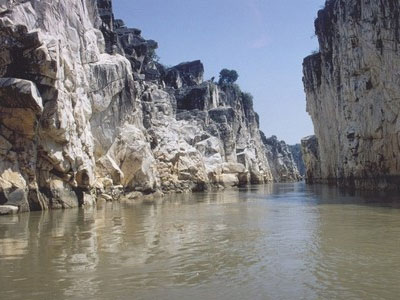Jabalpur Travel Guide:

Introduction
Jabalpur is a city in the state of Madhya Pradesh in India. It is the third most populous city of Madhya Pradesh after Indore and Bhopal and is located in the Mahakaushal region of central India or eastern Madhya Pradesh. It is bordered by Katni to the north, Umaria to the north-east, Dindori to the east, Mandla to the south-east, Seoni to the south, Narsimhapur to the south-west and Damoh to the north-west. Jabalpur is the administrative headquarters of Jabalpur district (the second most populous district of Madhya Pradesh) and Jabalpur division.
Historically, a center of Kalchuri and Gond dynasties, Jabalpur developed a syncretic culture influenced by the intermittent reigns of the Maratha and Mughal empires. In the early nineteenth century, it was gradually annexed in British India as Jubbulpore and incorporated as a major cantonment town. During the Indian independence movement, Jabalpur became the site of the historical Indian National Congress session in Tripuri which elected Subhash Chandra Bose as Congress President for the first time. Post-independence, there have been demands for a separate state of Mahakoshal with Jabalpur as its capital. During the early 1990s, the city gained national prominence following dozen cases of teenage self-immolations in the aftermath of Mandal Commission protests of 1990.
History
Ashokan relics have been found in Jabalpur suggesting the existence of human civilization here dating back to 300 BC. Much later in history, Jabalpur was the capital of the famous Tripuri kingdom in the 9th–10th centuries.
* The Haihayas and Gonds.
In AD 875, it was taken over by the Kalachuri dynasty who made Jabalpur their capital. In the 13th century, the Gonds seized it and made it their capital. Inscriptions record the existence during the 11th and 12th centuries of a local line of princes of the Haihai people who are closely connected with the history of Gondwana.
In the 16th century, the Gond raja of Garha-Mandla extended his power over fifty-two districts, including the present Jabalpur. During the minority of his grandson, Asaf Khan, the viceroy of Kara Manikpur, conquered the Garha principality and held it at first as an independent chief. Eventually he submitted to the Mughal emperor Akbar. The Gond Queen Rani Durgavati died fighting the Mughal forces led by Mughal Emperor Akbar.
* The Marathas.
The Mughal Empire, however, enjoyed little more than a nominal supremacy; and the princes of Garha-Mandla maintained a practical independence until their subjugation by the Maratha governors of Sagar in 1781. They called it 'Jabbalgarh'. In 1798 the Maratha Peshwa granted the Narmada valley to the Bhonsle princes of Nagpur, who continued to hold the district until the British occupied it in 1818 after defeating the Marathas. The British made 'Jabbalgarh' the commission headquarters of the Narmada territories and established a cantonment here.
Climate
Jabalpur has a humid subtropical climate, typical of North-Central India. Summer starts in late March and last up to June. May is the hottest month with average temperatures reaching up to and beyond 45 C. They are followed by monsoon season, which lasts until early October, with a total precipitation of nearly 55 in (1386 mm). Winter starts in late November and last until early March. They peak in January with average temperature near 7 C.
Culture
The presence of the river Narmada, rule of Gond and Kalchuri-Maratha dynasties made Jabalpur a Hindu dominated area. Mughal rule brought in a sizable Muslim population. The city had Hindu-Muslim riots in the 1960s. There has been a sharp decline in these riots owing to gradual, yet slow path to progress. The culture is dominantly related to agricultural population of the city and surrounding areas. The food and clothing change with the harvest of crops in every season, usually observed by Hindus.
Jabalpur has a very cosmopolitan feel about it where you can find people of almost all major religions and castes in India. The city has Marwari, Bengali, Malyali, Tamil, Telugu, Kannadiga, Marathi, and Punjabi people in sizable ratios and there are people from other regions of India as well. The city has been a stage for many cultural inventions and many traditional rituals. The city has been peaceful since a long time after the 1960s and now is marching forward towards development in the spheres of infrastructure and industries.
Airlines
The Jabalpur Airport, near hitkarini college of engineering and technology (IATA Code: JLR), also known as DUMNA Airport, is about 20 km from the city. Kingfisher Airlines and Indian Airlines operate flight service to and fro New Delhi. Kingfisher flights to and from Jabalpur are quite full. Kingfisher airlines also operates flight service to and from Mumbai from 24 January 2011